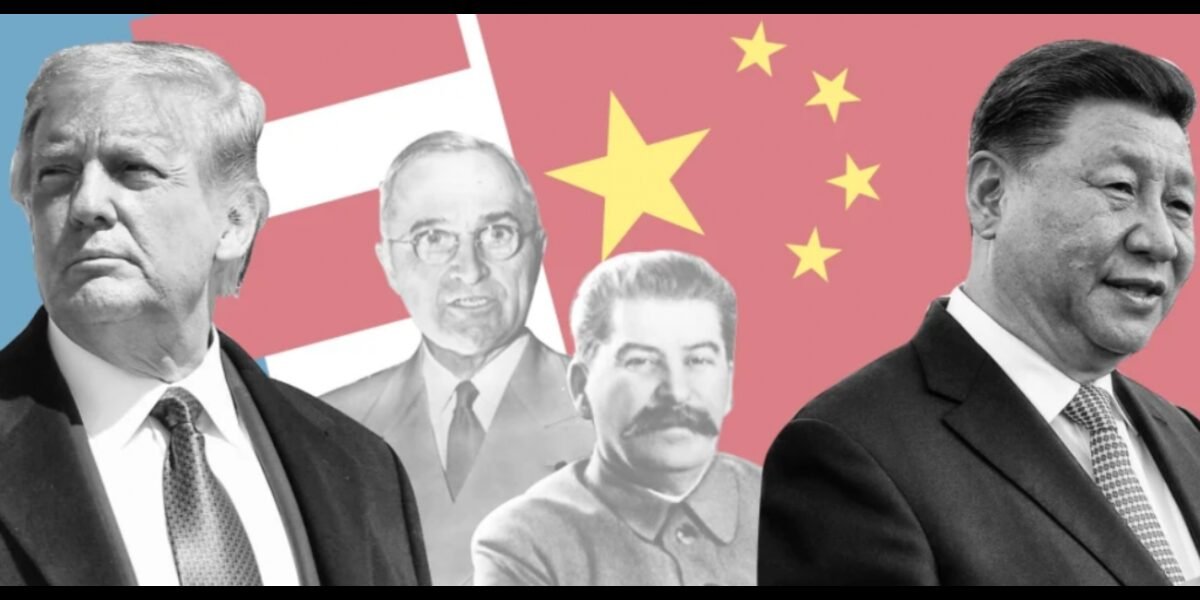The relations between the United States and China have deteriorated tremendously in the last few decades, followed by a competition across multiple fronts, including economic, military, and technological fronts. This intensified competition between the one major power and one growing power has led many strategists and policy analysts to contemplate whether the world has entered a new Cold War era, which some call Cold War 2.0, or is this merely a strategic rivalry?
Many observers also draw a parallel between the rivalry of the United States and China with the 20th Century’s half-decade-long indirect confrontation between the United States and the Soviet Union (USSR). To determine if the US-China competition is on par with the Cold War or not, it is necessary to delve into the defining characteristics of both eras to compare and contrast the dynamics and explore the implications for the global world order.
The Original Cold War: Brief Overview
The Cold War (1945 – 1991) refers to the protracted geopolitical, geo-economic, and the ideological struggle between the then two superpowers and their allies, namely the liberal democratic United States and its allies (also known as the Western bloc), and the communist Soviet Union and its allies (also known as the Eastern bloc). The core features of the Cold War included:
- The ideological competition between the liberal democracy (represented by the US and its allies) and Marxist-Leninist communism (championed by the USSR) was one of the core features of the Cold War era. Both superpowers promoted their ideologies directly and indirectly, using not only their allies but also institutions such as Pravda and Radio Free Europe.
- The most alarming aspect of the Cold War era was the nuclear arms race between the US and the USSR. The arms race during this period was driven by the doctrine of Mutually Assured Destruction (MAD), based on the idea that any direct conflict between the two superpowers would result in the annihilation of the two as they had developed ICBMs, SLBMs, and strategic bombs, forming a “nuclear triad.” The 1962 Cuban Missile Crisis brought the world close to annihilation, but it also underscored the need for mechanisms and treaties to prevent such a crisis in the future, and laid the foundation of SALT I & II, the Intermediate-Range Nuclear Forces (INF) Treaty, and the Strategic Arms Reduction Treaty (START I). Despite the fact that some of these treaties stand null and void today, it cannot be denied that they played an important role in managing the arms race during the Cold War period.
- During the Cold War, the world was bipolar, with the majority of the states aligning themselves with either one of the blocs (Warsaw vs. NATO). The direct military confrontation between the US and USSR was avoided due to the threat of MAD; instead, the war was fought through proxies in regions such as Vietnam, Korea, Afghanistan, and some parts of Latin America and Africa.
- The core strategy of the US and the Western bloc was the containment of communism, and it was done through extensive intelligence gathering and covert operations against the Soviet Union.
Although the ongoing rivalry between the United States and China holds some similarities with the US-USSR Cold War era, yet in many ways, it remains different, multi-faceted, and complex in nature. To better understand the US-China strategic rivalry, it is imperative to learn about its core features. These features are briefly explored below:
US-China Rivalry: Core Features
Economic Interdependence
Unlike the Cold War, where the Soviet Union and the US were not economically engaging with one another, the United States and China are deeply integrated at an economic level. According to the Office of the United States Trade Representative, in 2024, the US’ total trade with China was an estimated $582.4 billion. The US had exported goods worth $143.5 billion to China, and its imports from China were nearly $438.9 billion. Although these statistics will change after the cooling down of the trade war that is going on between the two countries. But it cannot be denied that China still remains and will continue to remain a vital player in the global supply chains. This economic interdependence acts both as a source of tension and a deterrent, preventing full-scale conflict between the United States and China.
Technological Competition
Both the US and China have been seeking supremacy in the critical and emerging technologies, including quantum computing, artificial intelligence (AI), 5G, biotechnology, and above all, semiconductors. Both states consider technological leadership crucial for the future military and economic power.
Regional Assertiveness and Modernization of Military
Since the start of the 21st Century, both China and the US have been expanding their spheres of influence, especially in the South China Sea and the Indo-Pacific. Similarly, both states have been rapidly modernizing their military, particularly their navy and missile technologies, to counter any possible challenges to their ambitions. While the US has been more focused on an on-ground military presence, China has been focusing on expanding its influence through soft economic power, to also uplift its economic partners, alongside its economy. This factor alone makes the current dynamic different than that of the Cold War era.
Ideological Differences
The ideological clash between communism and capitalism is not as strong as what was seen during the Cold War, mainly due to the fact that China operates on a unique system of state that is a blend of both authoritarian political control and a capitalist-style economy. China’s “Beijing Consensus” has also gained some popularity in recent years, and due to its unconventional approach of economic liberalization that is without political liberalization, this model is considered an alternative to the Western neoliberal approach.
Shared Global Challenges and Information Flow
Contrary to the Cold War Era, both the United States and China acknowledge the shared global challenges, such as nuclear proliferation and climate change, which require some cooperation, creating a potential for limited interaction. Similarly, in the age of significant digital connectivity, resulting from globalization, it is impossible to enforce a Cold War-style “iron curtain” to ensure strong censorship and limited exchange.
Professor Thomas Christensen of Columbia University argues in Foreign Affairs that the strategic rivalry between the United States and China cannot be labelled as the Cold War, as it lacks three core principles. These principles include:
- The US and China are currently not engaged in any ideological struggle to win the hearts and minds of third-world countries, a feature that remained prominent during the entirety of the Cold War between the US and the USSR.
- The US and China are not leading any alliances that could turn into a proxy war, and lead to a possible nuclear crisis in the world.
- It is nearly impossible to divide the world into blocs today due to economic globalization and the interdependence of countries on one another.
Although, the ongoing rivalry between the US and China exhibits some unsettling echoes of the Cold War, mainly due to its ideological undertones and competitive dynamics, however, labelling it “Cold War 2.0” would risk oversimplifying and overlooking the crucial differences, especially the economic interdependence and the existence of shared global challenges that require all countries including the US and China to show some degree of cooperation.
Therefore, the current dynamics can be termed as “strategic rivalry” – one that is more complicated, intertwined, and undoubtedly more unpredictable than any other conflict of the 20th Century.
Javaria Khalid is a writer and researcher, who specializes in Pakistan's Foreign Policy Analysis, transatlantic geopolitics, and Pakistan’s relations with the European countries and the EU. She can be reached at javariakhalid011@outlook.com




